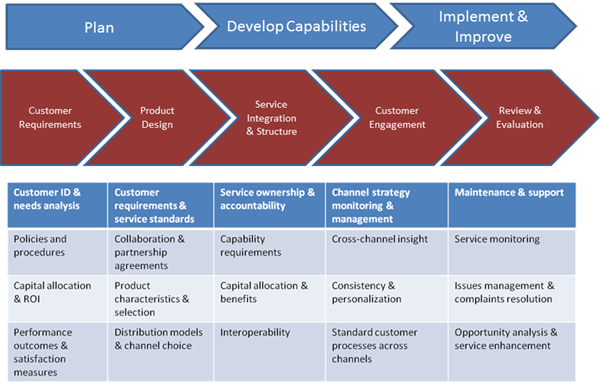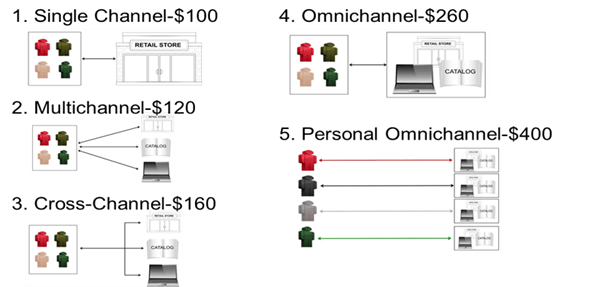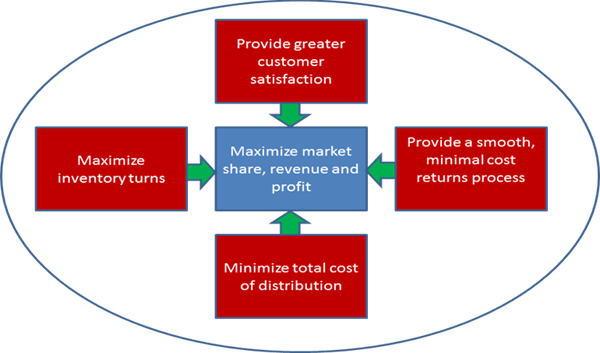Published November 20, 2014
In today’s retail environment, distribution channels are diverse and complicated. Consumer options to purchase goods include retail storefronts, catalogs, call centers, or online through computer or mobile technology. Online marketplaces are fragmented even more by a number of direct and varied independent marketplace organizations. As a result of three megatrends, retail is also quickly undergoing massive transformations.
These three megatrends include: technology, globalization, and supply chain. The technologies of the internet, e-commerce, smart phones, and social media have totally changed the definition of the word “shopping.” Globalization has resulted in products being designed for global consumption, manufactured in the country that provides the lowest total delivered cost and sold and delivered wherever, whenever, and however the customer desires. The role of the supply chain is to support the “shopping” desires of global customers with an efficient and effective flow of goods, information, and cash. The key focus to retail transformations going forward is the omnichannel supply chain. The omnichannel supply chain needs to be evaluated and evolve by moving through a process of Strategy-Structure-Implementation.
Omnichannel Channel Management (OCM) is a component of omnichannel strategy, and it requires organizations to answer these questions:
- What to sell? Must decide a path for “OWN” brand as well as general merchandise.
- Who to sell to? How to segment product offerings for different channels and how to minimize channel conflict.
- Where to sell? Different offerings for different geographical regions/countries.
- How to sell? Directly via stores, outlets, e-commerce, catalogs, etc. or indirectly via wholesale, forward marketplaces, or backward marketplaces.
Which of the many channels maximizes revenue and profitability? The quick answer is that companies need to pursue more than one channel. Different customized business plans must be applied to each channel and monitored on an ongoing basis in order to optimize multiple channel performance. Suppliers that identify proper partnering strategies, recruit the right partners, create effective channel programs, and develop insightful performance management systems have the structure in place to become industry leaders and experience strong profitable growth.
Consider these questions as your channel strategy evolves:
- What is the best channel strategy (or strategies) based on our objectives?
- How do we properly segment channels and develop a pull demand system?
- How do we allocate and develop the right partners or internal capabilities?
- Do our investments motivate the correct company and partner behaviors?
- How are we positioned compared to our competition?
- How well is our team driving our channels results?
- How well does our channel management strategy allow us to leverage our “OWN” products?
- How well does our channel strategy allow us to leverage forward and backward marketplaces?
A channel management strategy identifies the optimal method to engage customers, the best business processes supported by each channel, and coordinates interactions between multiple channels. A channel strategy should produce:
- Information and experience omnichannel consistency: Although customers may use a variety of channels for the same supplier, they expect consistency in their experiences when interacting with that supplier, regardless of which channel they use.
- Cross-channel insight: Customers expect each channel within a particular retailer to be attuned to and aware of all recent interactions and transactions that were initiated through any channels.
Information and experience omnichannel consistency is achieved through the standardization of business processes and integration of data. In this way, customers can achieve the same experience regardless of the channel they purchased from, plus the performance of the channel can be easily measured. Through the integration of data, cross-channel insight can be easily implemented across business units and channels.
Standardization of business processes establishes the same processes regardless of who is performing the process or where it is completed. Process standardization delivers efficiency and predictability across different channels. For example, using a standard process for selling products in different channels allows the activities of different channels to be measured, compared, and improved.
Integration shares the data developed by separate channels so it can be compiled and analyzed. Some of the benefits of integrated data include increased efficiency, coordination, transparency, and agility. An integrated set of business processes improves customer service, provides management with better information to make decisions, and allows changes in one part of the business to alert other parts of the business to actions they need to take. Integration can also speed up the overall flow of information and transactions through a company. The biggest challenge of integration usually involves data. End-to-end integration requires companies to develop standard definitions and formats for data that will be shared across business units and functions.
Developing an effective channel management strategy requires a plan, capability development, and the ability to implement and improve.

Figure 1: Developing a Channel Management Strategy
Plan and Develop Capabilities
A company needs to determine the channels it will use to deliver its products to the market. Each channel will have an independent strategy that will include target customers, product mix, and price/service strategy for those products and customers. Channel partners, either internal or external, will be drivers of the revenue, profitability, and success of that channel. The partners will have their own objective and revenue targets as well as their own capital allocation and a measurable return on investment.
The essential steps for developing a channel management strategy include:
- Define the existing channel management strategy and infrastructure.
- Document your current thinking regarding the variety of channels available, including storefront, online, call center, etc.
- Conduct an external scan of your marketplace and perform a competitor channel management analysis.
- Define the optimal channel management strategy based on your objectives and goals.
- Refine the sales and service plan for the optimal channel management strategy.
- Continuous improvement of the strategy as conditions change.
Implement and Improve
A viable channel strategy requires continuous monitoring, and examination of the performance of your internal or external channel partners. The channel strategy should be adjusted with the addition of new channels, product lines, or geographies.

Figure 2: Ongoing Channel Management Process
Tompkins International has developed a model of the Evolution of Customer Connectivity. The figure below illustrates how the integration of multiple channels increases revenue per customer. With the optimum integrated multichannel strategy, customer revenue will be increased with cross-channel insight and best-in-class customer experiences.

Figure 3: Evolution of Customer Connectivity
Retailers need to use their supply chain to create and operate an optimized channel strategy. They must routinely analyze sales data, and use that data to identify areas of strength, weakness, opportunity, and threat. The ultimate benefits of a well-tuned channel management strategy are maximized revenue and profit.

Figure 4. Maximizing Market Share, Revenue, and Profit
Tompkins International has deep internal expertise on channel management to maximize revenue and profit. Our experience spans from planning to implementation. We can guide you through the standardization of processes, change management, and implementing the IT required to integrate the data.



